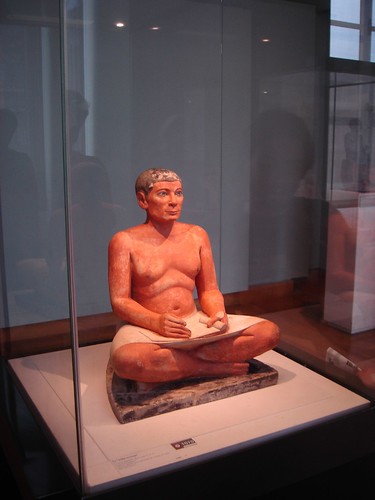I have put togerter a post on my
class hub. It describes to parents how I will use blogging in my classroom this year. Here is what I Posted.
Meet the Teacher Night
Every year there is an opportunity to meet the parents of my students. I get to explain how my course is run and what expectations I have of the students and of parents.
Assessment in the course this year for the first term is based on test and quiz scores,
journalling, completion of
TLE-8 computer units, mental math activities and interaction with the classroom blog.
I like to give the parents a heads up on the
positive aspects of blogging and the importance of the students being responsible for their actions.
Blogging is a very public form of communication.
Bud Hunt, a teacher in the U.S. has these guidelines for his students. I will use them too.
- Students using blogs are expected to treat blogspaces as classroom spaces. Speech that is inappropriate for class is not appropriate for our blog. While we encourage you to engage in debate and conversation with other bloggers, we also expect that you will conduct yourself in a manner reflective of a representative of this school.
- Never EVER EVER give out or record personal information on our blog. Our blog exists as a public space on the Internet. Don’t share anything that you don’t want the world to know. For your safety, be careful what you say, too. Don’t give out your phone number or home address. This is particularly important to remember if you have a personal online journal or blog elsewhere.
- Again, your blog is a public space. And if you put it on the Internet, odds are really good that it will stay on the Internet. Always. That means ten years from now when you are looking for a job, it might be possible for an employer to discover some really hateful and immature things you said when you were younger and more prone to foolish things. Be sure that anything you write you are proud of. It can come back to haunt you if you don’t.
>
- Never link to something you haven’t read. While it isn’t your job to police the Internet, when you link to something, you should make sure it is something that you really want to be associated with. If a link contains material that might be creepy or make some people uncomfortable, you should probably try a different source.
One form of blogging work is Scribe Posts.
Scribe Posts
Write a brief summary of what we learned in class today. Include enough detail so that someone who was away sick, or missed class for any other reason, can catch up on what they missed. Over the course of the semester, the scribe posts will grow into the textbook for the course; written by students for students. Remember that as each of you write your scribe posts. Ask yourself: "Is this good enough for our textbook? Would a graphic or other example(s) help illustrate what we learned?" And remember, you have a global audience, impress them.
Students will be expected to contribute one scribe post every 30 classes or about 4 times a year.
Examples of Scribe Posts from last year.
LaraMae did a scribe post during our algebra unit. Her scribe included a picture that accuratly de
picted a piece of paper that had been folded into 5 columns filled with notes. It was awesome.
Norielle through the use of one image described and explained how to find the surface area of a cylinder.
Josh showed how to find the volume of geometric solids in tremendous detail.
The Scribe Post Hall of Fame showcases the best Scribe Posts from around the globe. Our student figure prominantly
on this site.
Another way we use our classroom blog is to create Growing Posts.
Growing Posts
Growing posts are like unit reviews. Each growing post starts off as one post by the student answering one question about a concept. Each day the students have to answer a new question and add it to their post. At the end of the unit they will have a comprehensive resource of material needed to study for tests or complete assignments.
Here are some excellent Growing Posts
Sometimes students strive for enrichment. Here is an example of intrinsic creativity
Aldrin's Fraction Growing Post Dion's Growing Post The Growing Post Hall Of Fame was founded to allow student work to be displayed for the world to see. I am proud of the work that students did last year and am looking forward to this years inductee's.
This years classes will participate in many activities that will prepare them for their future. As parents enjoy their ride through the Sargent Park Math Zone of Room 17. If you dare come along for the ride with them!!
I showed the students this video today. Watch it and see where the world might... is going. It was made by a teacher
K. Fisch fr
om Colorado.
Ah the first post is over. Next comes the appropriate links and other sidebar goodies.

